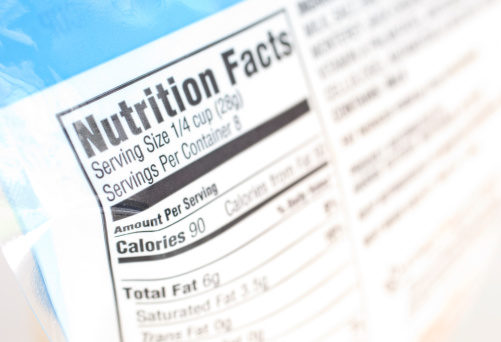The nutrition facts label applies to all package foods except for poultry, certain meats and processed egg products which are instead regulated by the U.S. Department of Agriculture’s Food Safety and Inspection Service.
“For more than 20 years, Americans have relied on the Nutrition Facts label as a leading source of information regarding calories, fat and other nutrients to help them understand more about the foods they eat in a day,” said FDA Commissioner Robert Califf, M.D. in a news release. “The updated label makes improvements to this valuable resource so consumers can make more informed food choices – one of the most important steps a person can take to reduce the risk of heart disease and obesity.”
Refreshed Design
To ensure consumers are able to make informed decisions about the foods they eat, changes to the label, which do not include the actual look, will include:
- An increase in the type size for “Calories,” “Servings Per Container” and the “Serving Size” declaration.
- Bolding the number of calories and the “Serving size” declaration.
- Changing the footnote to better explain what percent Daily Value means.
Nutrition Science
Based on newer scientific evidence from the Institute of Medicine and the 2015 Dietary Guidelines Advisory Committee Report, which was used to help develop the 2015-2020 Dietary Guidelines for Americans, daily values for nutrients like dietary fiber are being updated. In addition, Daily Values will now be a reference amount of nutrients to consume or not exceed and will be used to calculate the percent Daily Value.
There will also be a declaration of grams and a percent Daily Value for “Added Sugars.” Scientific data that is consistent with the 2015-2020 Dietary Guidelines for Americans shows that individuals should consume only 10% of their total daily calories from added sugar.
“Total Fat,” Saturated Fat,” and “Trans Fat” will continue to be required on labels, however “Calories from Fat” will be removed due to research showing the type of fat is more important than the amount.
Vitamin D and potassium are now required on labeling due to them being hard to get enough of, which can lead to a higher risk for chronic disease. Calcium and iron will remain required for labeling, though vitamin A and C will only be voluntary due to deficiencies of these vitamins being rare.
Serving Size and Label Requirements
The Nutrition Labeling and Education Act, requires serving sizes be based on what individuals actually eat and since the last serving size requirement hasn’t changed since being published in 1993, serving sizes are also being changed. Two examples provided by the FDA were a serving of soda being changed from 8 ounces to 12 ounces and a serving of ice cream being changed from ½ cup to 2/3 cup.
Package sizes are also changing. Because individuals can consume a package that is between one and two servings, or for example a 20-ounce soda in one sitting, the calories and other nutrients will be labeled as one serving.
Manufacturers will also provide “dual column” labels to indicate both “per serving” and “per package” calorie and nutrition information for products that are larger than a single serving but can be consumed in one or multiple sittings. An example provide by the FDA is a dual label for a 24-ounce bottle of soda. With a dual label, regulators hope individuals will better understand how many calories and nutrients they are getting.
July 26, 2018 is the last day for manufacturers to comply with final requirements. An additional year will be given to manufacturers with less than $10 million in annual food sales.
Posted on WholeFoods Magazine Online 5/25/2016










